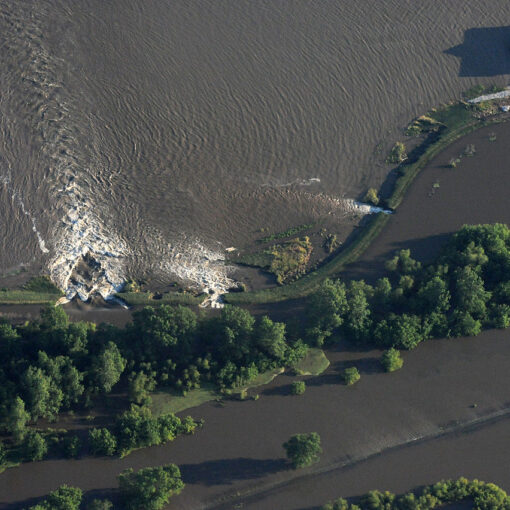 On Monday, March 21, the Securities and Exchange Commission (SEC) proposed new rules aimed at enhancing public companies’ disclosure of climate-related risks. The proposed rule, which was supported by three of the four sitting SEC Commissioners, notes that “climate-related risks have present financial consequences that investors in public companies consider in making investment and voting decisions.” The proposed rule aims to ensure that investors have access to “consistent, comparable, and reliable” information on climate-related risks so they can “make investment or voting decisions in line with their risk preferences.” To that end, the proposed rule would, if adopted, impose new disclosure requirements on SEC registrants. This blog summarizes several of those requirements.
On Monday, March 21, the Securities and Exchange Commission (SEC) proposed new rules aimed at enhancing public companies’ disclosure of climate-related risks. The proposed rule, which was supported by three of the four sitting SEC Commissioners, notes that “climate-related risks have present financial consequences that investors in public companies consider in making investment and voting decisions.” The proposed rule aims to ensure that investors have access to “consistent, comparable, and reliable” information on climate-related risks so they can “make investment or voting decisions in line with their risk preferences.” To that end, the proposed rule would, if adopted, impose new disclosure requirements on SEC registrants. This blog summarizes several of those requirements.
- Disclosure of physical risks: Under the proposed rule, registrants would be required to disclose “any climate-related risks that are reasonably likely to have a material impact on the registrant’s business or consolidated financial statements” over the short, medium, or long term. The proposed rule defines “climate-related risks” to mean “the actual or potential negative impacts of climate-related conditions and events on a registrant’s consolidated financial statements, business operations, or value chains, as a whole.” There are specific requirements to disclose risks arising from the physical impacts of climate change (defined as “physical risks”). For example, registrants would be required to describe the nature of any physical risk, including whether it is an “acute” event-driven risk related to a short-term extreme weather event, or a “chronic” risk arising from “longer-term weather patterns and related effects, such as sustained higher temperatures, sea level rise, drought, and increased wildfire.” In addition to describing the nature of each physical risk, registrants would also need to identify the location (by zip code) of at-risk properties, processes, or operations. There are additional disclosure requirements for water-related risks:
- Where “flooding presents a material physical risk” to a registrant’s business, the registrant would need to “disclose the percentage of buildings, plants, or properties (square meters or acres) that are localized in flood hazard areas.”
- Where material risks arise from “the location of assets in regions of high or extremely high water stress,” the registrant would need to “disclose the amount of assets (e.g., book value and as a percent of total assets) located in such regions,” and “the percentage of its total water usage from water withdrawn in” the regions.
- Financial impact metrics: Under the proposed rule, where a registrant identifies climate-related risks that have impacted or are reasonably likely to impact a registrant’s consolidated financial statements, it would have to include “disaggregated information” about those risks in its consolidated financial statements (with the exception discussed below). Specifically, with respect to physical risks, the registrant would have to disclose “the impacts of severe weather events and other natural conditions” on line items in its consolidated financial statements. The registrant would similarly have to disclose the impact of any transition-related climate risks on line items in its financial statements. There is, however, an important exemption. Disclosure would not be required if the aggregated impact of physical and transition risks is less than one percent of the line item.
- Expenditure metrics: Under the proposed rule, a registrant would have to separately disclose, in its financial statements, amounts of expenditure expensed and capitalized costs incurred in connection “with climate-related events (i.e., severe weather events and other natural conditions and identified physical risks) and . . . transition activities, specifically, to reduce GHG emissions or otherwise mitigate exposure to transition risks” if the aggregated amount equals one-percent or more of total expenses or capitalized costs.
- Disclosure of scenario analysis: Under the proposed rule, a registrant would be required to “describe any analytical tools, such as scenario analysis, that the registrant uses to assess the impact of climate-related risks on its business and consolidated financial statements, or to support the resilience of its strategy and business model in light of foreseeable climate-related risks.” The SEC emphasized that the disclosure requirements would only apply if a registrant itself chooses to conduct scenario analysis. The SEC expressly rejected suggestions that it should require registrants to conduct scenario analysis and disclose the results of that analysis and stated: “we recognize that not every registrant conducts scenario analysis and that, in certain circumstances, it may be costly or difficult for some registrants to conduct such analysis.”
- Disclosure of internal carbon price: Under the proposed rule, registrants would be required to disclose any carbon price used internally. The disclosure would need to specify, among other things, “the price per metric ton of carbon dioxide-equivalent,” the “rationale for selecting” the price, and how the price is used “to evaluate and manage climate-related risks.” Again, the SEC emphasized that it was up to registrants to decide whether to use an internal carbon price, and rejected suggestions that it should require registrants to adopt a particular price or pricing methodology.
- Disclosure of transition plans: Under the proposed rule, if a registrant adopts a transition plan (defined as a “strategy and implementation plan to reduce climate-related risks”), it would be required to disclose “as applicable, how it plans to mitigate or adapt to any identified physical risks . . . [and] transition risks.” The registrant would be required to “update its disclosure about its transition plan each fiscal year by describing the actions taken during the year to achieve the plan’s targets or goal.”
- Disclosure of greenhouse gas emissions: Under the proposed rule, registrants would be required to disclose their Scope 1 and 2 emissions of carbon dioxide, methane, nitrous oxide, nitrogen trifluoride, hydrofluorocarbons, perfluorocarbons, and sulfur hexafluoride. Scope 1 emissions are “direct . . . emissions from operations that are owned or controlled by [the] registrant,” which Scope 2 emissions are “indirect . . . emissions form the generation of purchased or acquired electricity, steam, heat, or cooling that is consumed by operations owned or controlled by [the] registrant.” Certain registrants would also be required to disclose Scope 3 emissions—i.e., indirect emissions falling outside Scopes 1 and 2—“if material or if the registrant has set a [greenhouse gas] emissions reduction target or goal that includes its Scope 3 emissions.” In the proposal, the SEC’s stated that “[w]hen assessing the materiality of Scope 3 emissions, registrants should consider whether Scope 3 emissions make up a relatively significant portion of their overall GHG emissions.” The SEC noted, however, that the materiality determination cannot be based solely on a quantitative analysis. According to the SEC: “Scope 3 emissions may make up a relatively small portion of a registrant’s overall GHG emissions but still be material where Scope 3 represents a significant risk, is subject to significant regulatory focus, or if there is a substantial likelihood that a reasonable investor would consider it important.” The SEC is proposing to provide a “safe harbor” for Scope 3 emissions disclosures. Under the safe harbor, “disclosure of Scope 3 emissions by or on behalf of the registrants would be deemed not to be a fraudulent statement unless it is shown that such statement was made or reaffirmed without a reasonable basis or was disclosed other than in good faith.”
This is test biographical description.




